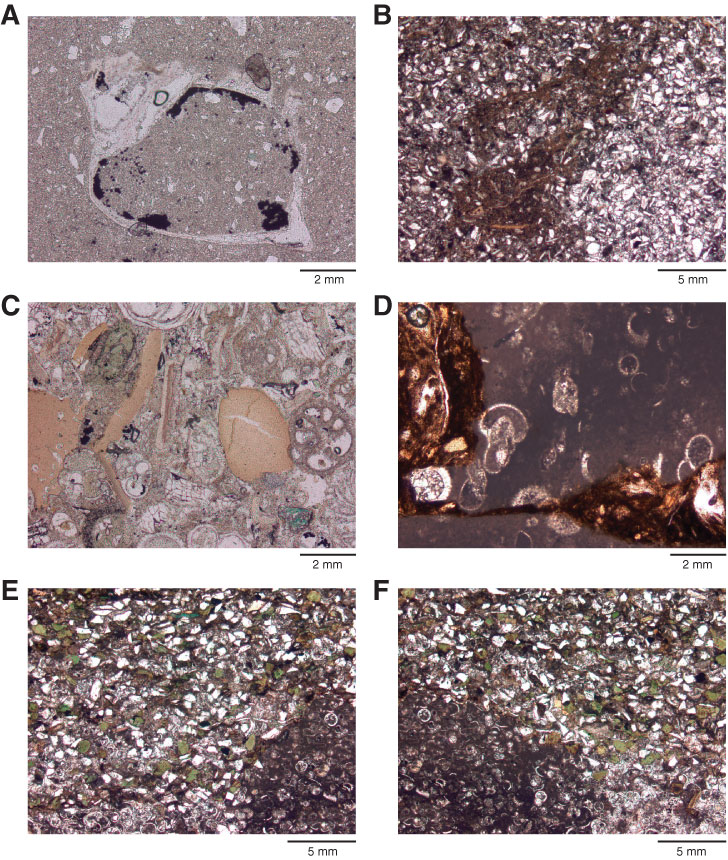
Figure F12. Thin section photomicrographs illustrating changes in lithology and diagenesis in the succession. A. Partly dissolved aragonitic gastropod set in a muddy micritic matrix with sparse feldspar and quartz silt (marlstone; Subunit IB); moldic pores occur elsewhere in the slide. Note the authigenic opaque minerals (pyrite?) partly lining shell interior (Sample 317-U1352B-17H-4, 69 cm). B. Bioturbated marlstone in Subunit IIA showing the variability of texture/lithology present on a microscopic scale in these mixed (zoned) carbonate/siliciclastic rocks: sandy marlstone (left), marlstone (center), carbonate-cemented sandstone (right) (Sample 317-U1352C-26R-1, 23 cm). C. Sandy marlstone in Subunit IB consisting of sand-sized foraminifers and feldspar/quartz grains set in a fine micritic matrix. Reddish brown milliolid foraminifers are less competent than other foraminifer types and show evidence of fracturing, interpenetration, and possibly pressure solution. The more competent foraminifers are locally recrystallized and exhibit fine carbonate overgrowths (far right) and local glauconitic infill (upper left). High residual porosity in this rock is mostly intraparticle within foraminifer tests (Sample 317-U1352B-42X-5, 5 cm). D. Section of high-amplitude stylolite passing through pelagic limestone with sparse foraminifers in Unit III. The stylolite is marked by brownish clay, along which the foraminifers are truncated, presumably by pressure solution (Sample 317-U1352B-141R-2, 15 cm). E, F. Abrupt high-angle contact between muddy limestone to limestone (transitional) below (within host rock) and glauconitic sandy marlstone above (potential injection material) in Subunit IIC. Limestone color is a function of the foraminifer/nannofossil ratio (higher in light limestone; lower in dark limestone) (Sample 317-U1352C-137R-2, 58 cm).

Previous | Close | Next | Top of page